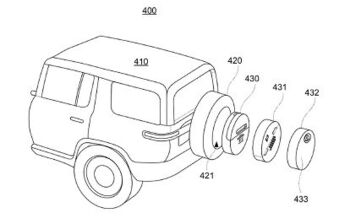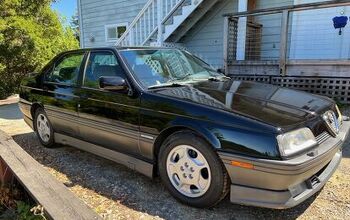Georgia: Longer Yellows Force City to End Red Light Camera Program
The Norcross, Georgia City Council voted Monday to end its relationship with LaserCraft Inc., a red light camera company whose US headquarters lie just three miles down the road from city hall. LaserCraft’s troubles began last year when the Georgia General Assembly enacted a law requiring a one second increase (over the minimum national standard) in the yellow signal warning time at any intersection equipped with a red light camera. City documents show that once the law took effect, the accident and red light violation problem in Norcross virtually disappeared.
“With House Bill 77 we are now required to add one second to that . . . yellow light time,” Norcross Police Chief Dallas Stidd wrote in a memo to the city council. “We along with other jurisdictions have seen a significant decrease in citations. This will cause a shortfall in our budget for this program.”
A pair of red light cameras operated throughout 2008 with the shorter yellow yellow time, allowing LaserCraft to mail an average of fifteen tickets per day on the city’s behalf. After the yellow was lengthened on January 1, 2009, that figure dropped eighty percent to just three tickets per day—with devastating effect on the program’s bottom line.
In 2008, motorists paid $259,083 in citations. According to Stidd’s calculations, the longer yellow meant the automated ticketing program would lose $145,000 in 2009.
“The addition of one second has made a significant reduction in red light violations,” Stidd wrote. “We have realized a reduction in accidents at the two intersections.”
According to a Texas Transportation Institute study, the reduction in accidents and violations from an additional second of yellow was to be expected ( view study). This is so because red light cameras do not typically issue very many tickets to blatant red light runners.
The vast majority of “violations” happen when drivers misjudge the end of the yellow light by less than 0.25 seconds—literally the blink of an eye ( view TTI chart). According to a report by the California State Auditor, nearly 80 percent of that state’s tickets were issued for violations that took place less than one second into the red. By adding the second back into the yellow, that 80 percent disappeared in Norcross.
The extra second also brings yellow signal times closer to those that would be appropriate under the 1976 Institute of Transportation Engineers (ITE) standard. Around the time transportation officials began experimenting with photo enforcement, ITE began to change the timing formula so that it would consistently produce shorter yellows. As data from Fairfax County, Virginia show, the benefit of reversing these changes and lengthening yellows does not diminish over time.
Stidd’s work was not done, however. He saw the loss of the Norcross red light camera program as an opportunity to expand his police department.
“Traffic safety and enforcement go hand in hand, being one of the highest priorities for the city,” Stidd wrote. “However, I believe we can continue to accomplish this objective without losing money, especially in these difficult times…. I have compiled some traffic statistics and have come to a conservative number of projected revenue of the additional two traffic officers. The monthly revenue that could be realized is $11,578.00 or $602,056.00 yearly (see attached estimated weekly fines).”
In an attachment, Stidd calculates how much revenue each officer would be expected to bring in on a weekly basis from twelve categories of traffic ticket, ranging from driving with expired tags and speeding to driving under the influence of alcohol (DUI) ( view ticket quota). These numbers are very important to Norcross, as traffic tickets account for one-fifth of the city’s entire budget.
“Fines and Forfeitures are 21 percent ($2.4 million) of the revenue,” the fiscal 2008 budget stated. “Revenue from fines and forfeitures has been projected by trend analysis and expert consensus. There is a six percent increase over 2007. The increase is due to the Public Safety Department installation of an additional red light camera. Although the additional camera generates additional revenue, its main purpose is to act as a traffic safety device.”
Losing the Norcross contract is an embarrassing blow to LaserCraft, which is owned by the UK firm Public Safety Equipment Ltd. When the Australian photo enforcement company Redflex Traffic Systems similarly lost its contract to operate red light cameras in Scottsdale, Arizona—home base for its US operations—it packed up and moved to Phoenix.
More by The Newspaper
Latest Car Reviews
Read moreLatest Product Reviews
Read moreRecent Comments
- Bd2 Ultimately, it comes down to price/whether it makes financial sense for buyers (right now, BEVs just aren't there, even with the tax credit). HEVs are finally seeing their place in the sun, decades after being a niche market; this is due to premium for HEVs having narrowed significantly with pure ICE, whereby buyers can recoup that after 2-3 years of ownership.
- MaintenanceCosts I've experienced three cars that were the first year of the model. The two I bought (first-off-the-boat 2004 TSX and midyear 2006 Civic) were both Hondas and were both flawless. The other one was my ex-stepmother's 1990 Land Rover Discovery. It was one of the very first Euro-spec models, a two-door with an asthmatic carbureted 3.5L V8 and a five-speed manual. Every part of the car broke at some point, including things like hatch hinges that really shouldn't break. It turned her off Land Rover forever, and her cars since have all been Subarus.
- MaintenanceCosts When I was living with my Bolt in a rental condo and charging from 120V in the garage, as soon as the association figured out what was happening, they asked me to pay $30 a month to cover the cost. That's pretty close to what I was using so I had no issue with it.
- SCE to AUX I've had mixed results with first-year cars:71 Pinto - good. 85 LeBron GTS - good. 96 Grand Voyager - good. 02 Passat B5.5 - bad. 05 Odyssey - bad. I also had a last-year car that was terrible (80 Bobcat), but most cars were crap then, anyway.
- Crown Go big or go home. Never understood the "economy version" that manufacturers make of a performance car.


































Comments
Join the conversation
Oops! Did the legislature solve the problem the sheriff was hoping to perpetuate?
Too bad for LaserCraft their income plunged! It is mind boggling how a single second can equate to very large amounts of money. But more importantly, that one second can also equate to more lives saved. It's amazing for them to finally have that kind of decision. My URL --> Trucks Suppliers